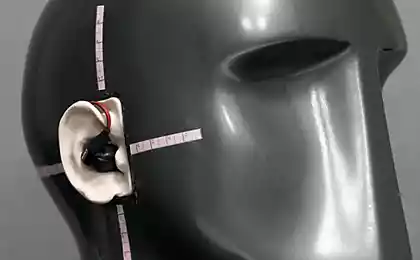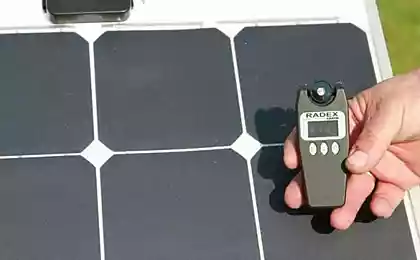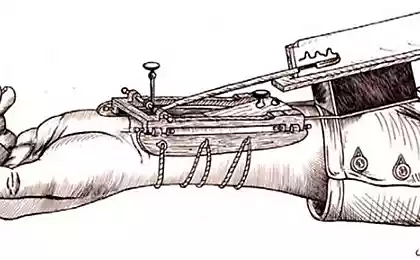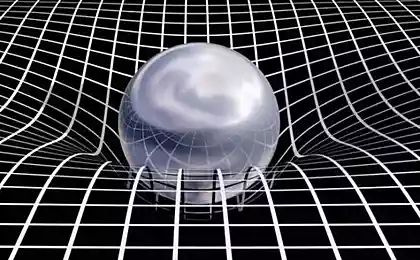1069
10 facts about units
Everyone is familiar with the basic units: inches, pounds, seconds, and others that are destroying our environment, accompanying every step from birth to death. However, there are a lot of units, which we have never even heard of. Some of them are funny, some of them are extremely important and serious, but they are all very strange.
10. Wales and Belgium
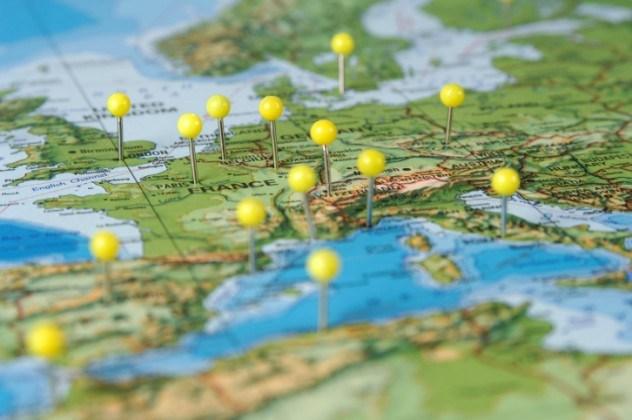
The English have a long history of use bizarre narrative units. The media especially like to describe the size of things in such terms as "the length of the bus", "football field" and "Olympic swimming pool." The strangest of these descriptive units is likely to Wales and Belgium. Wales, of course, about the same size as a country of about 20 000 square kilometers (8,000 sq. Miles).
This unit is originally from the time of the British Empire, and is used to describe the size of the different geographical areas in terms that can be understood by the common man. For example, when the Americans started the war in Vietnam, British media reported the country audience as "a country in Southeast Asia, which exceeds the size of Wales 14 times".
When Britain joined the European Union, Wales has been replaced by Belgium; country - 1, 5 times more than Wales and can act as such, easily understandable unit. In addition, the "Belgium" obviously more international concept.
9. Equivalent dose Banana
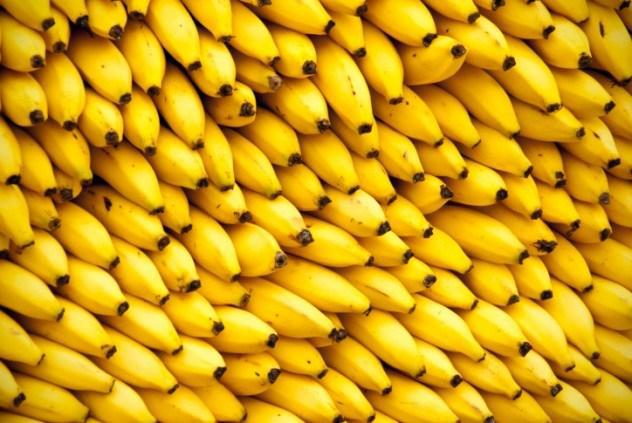
There are many ways to measure radiation, and most of them are named after scientists as Geiger, Roentgen or Sievert. And then there are the banana equivalent dose.
Each banana that you eat contaminated with a tiny amount of radiation. Oddly enough, this amount is approximately about 0, 1 Sv (sievert is the standard for the assessment of the biological effect of radiation). Although it is - obviously, safe dose, it offers easy to show a comparison with abstract numbers radiation. For example, to get the amount of radiation in Japan after the Fukushima disaster, you'd have to eat 76 million bananas.
Banana equivalent dose (BED) may in fact be the first unit of measure ever invented comedian. Initially, it was a wonderful comparison chart published in the popular comic XKCD. Since this measurement was taken like Forbes and BBC BBC because of its ease and accessibility.
8. Crab

Crab might seem like a unit for shellfish (or possibly venereal disease), but has no relation to the arthropods. Crabs and their cousins, millikraby used to express the intensity of the radiation sources in space.
Paradoxical name actually comes from the Crab Nebula, a vast ancient remnant of a supernova, known as intense and steady source of cosmic X-rays. Just as the concept of "meter" was used for determining the metric measurements up to 1960, the Crab Nebula is the standard for cosmic radiation.
In recent years, scientists have observed that its radiation is not as stable as previously thought, therefore, the status of the crab as a reliable measurement unit is now the object of some debate.
7. The second beard

Physics and technology are renowned for using a large number of different measurement systems, some of which are more funny than others. Second beard is one of the more bizarre. This is - a joke (but quite popular), a measure of short length, determine the distance over which the average hair beard grow for one second.
Second beard among many dimensions, inspired by (and parody) light year, the distance light, which can be overcome in one year. It is difficult to determine the exact measure, as there is no such thing as a "standardized beard." Despite this, the second beard usually considered about 5 nanometers (nm). This is based on the fact that in one year, about 31, 5 million seconds and suggested that the "standard" beard grows about 15 centimeters (6 inches) per year.
6. Units acuity ASTA

Most people are familiar with the Scoville, which measures the sharpness of chili peppers. However, this scale is somewhat inaccurate, therefore, true professionals scoff at Scoville and ranked according to their spices acuity units ASTA. This scale measures the sharpness of pepper, using the technique of liquid chromatography, which allows a more accurate estimate than the Scoville scale. But as the Scoville quite well known and standardized, ACTA is mainly used for measuring the color of a list of products. This is important because the quality (and price), chili powder, usually related to the depth of its red color.
5. Sidarb

People who have been in Australia may have encountered with this mysterious entity, which appears in official documents and in ordinary conversation. Get Sidarb strange name - the unit used to measure a large amount of rough water. It is named in honor of Sydney Harbour and is used in approximately the same as used by Wales and Belgium for the earth.
One Sidarb - that's about the amount of water in Sydney Harbour - about 562,000 megalitres during high tide. Not surprisingly, this unit is not gained popularity outside Australia.
4. Furlong, firkin (small barrel) and biweekly
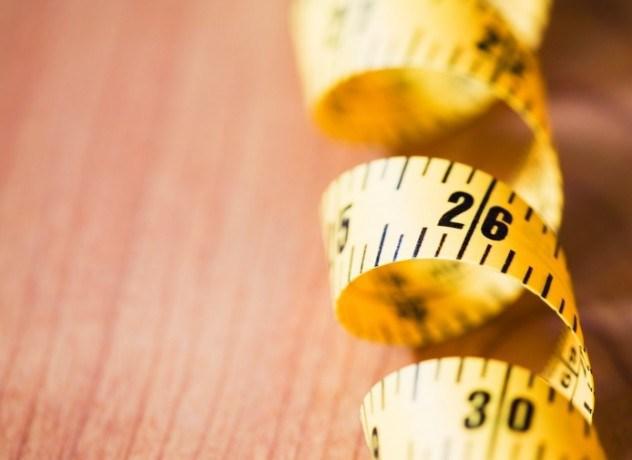
More countries measurement units originally born as a joke or a strange idea of one man, which eventually began to gain momentum. Furlong, Firkin (small barrel) and biweekly (FFF) is neither one of the official: it is - a rare case of completely arbitrary measure, which is a parody of other systems. It is based on approximately three basic dimensions: furlong for the length (200 meters or 220 yards), firkin (small barrel) for weight (40 kg or 90 pounds) and biweekly to determine the time (1.2 million seconds, or two weeks). Fortnight is based on the old English units, while others are simply a joke.
Although the three main units of the system (and their many derivatives) are nothing more than comic commentary on the many ridiculous measurement systems that exist, they are actually used in life. "Furlong in two weeks" and "firkiny in two weeks" in-jokes known to mean "any vague one." Mikrodvuhnedelnik (1.2096 seconds) is often used along with more legal units of time in the calculation - as a kind of joke engineer. For example, the function of the converter supports Google mikrodvuhnedelnik.
3. Savard

Music seeming so beautiful, and sometimes chaotic, in fact very closely related to mathematics. When it comes to scale Savard - the same thing.
The system is based around Savard - unit, which is 1/301 octave (musical interval between two notes). If you know music theory, Savar- convenient unit approach in certain situations.
Despite its complex obscurity, Savard was actually invented twice by two different people. The first was Joseph Sauveur, who invented it in 1696 and called it "eptameride" (Savard - 1/7 meride, logarithmic measure of the interval, which he invented). In the 20th century French physicist named Felix Savard began to apply this unit and gave it its name.
2. Erlang

Erlang is one of the most common unit of measure by which we encounter in our daily lives, even though we never realize it. Every second while we talk on the phone, ergangi ticking in the counter; the unit used to measure the telecommunications traffic. One Erlang is one hour of continuous voice traffic. Measurements Erlang vital and assist engineers in understanding the telecom and networking models that do not will fail under the high volume of calls.
Unit called "Erlang" in honor of Agder Klerup Erlang known eccentric and talented engineer, who single-handedly created a whole field of analysis of telephone networks.
1. Barn
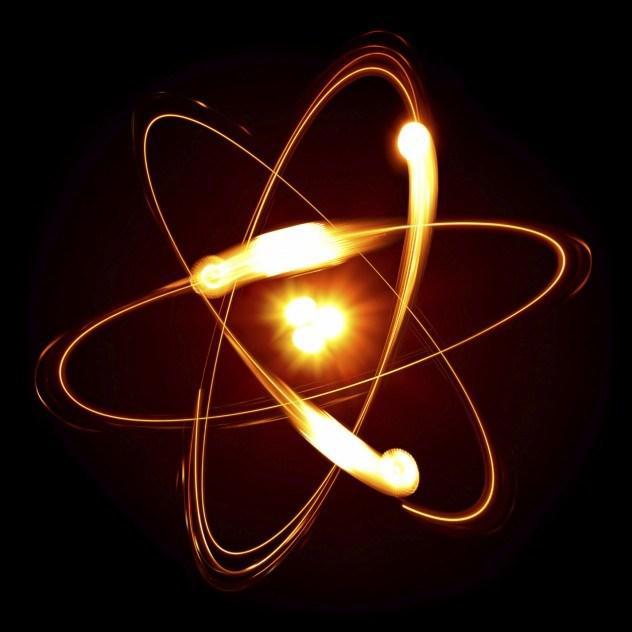
If there was ever a unit that seemed that was supposed to be connected with agriculture, it is of course "barn." The very name of the unit suggests agriculture and grazing cattle, and this could not be further from the truth. Barn - a unit of elementary particle physics (along with its cousins, femtobarn and inverse femtobarn), which is used to show the size, how many particles striking the sensor in the collider experiments.
Barn began to be used in June 1943, when he began appearing in reports Los Alamos secret lab. His so-called because of the fact that the original name of "Oppenheimer" and "Bethe" was considered too difficult to use effectively. Scientists have invented a unit that humans is associated with agriculture and nothing more.
10. Wales and Belgium

The English have a long history of use bizarre narrative units. The media especially like to describe the size of things in such terms as "the length of the bus", "football field" and "Olympic swimming pool." The strangest of these descriptive units is likely to Wales and Belgium. Wales, of course, about the same size as a country of about 20 000 square kilometers (8,000 sq. Miles).
This unit is originally from the time of the British Empire, and is used to describe the size of the different geographical areas in terms that can be understood by the common man. For example, when the Americans started the war in Vietnam, British media reported the country audience as "a country in Southeast Asia, which exceeds the size of Wales 14 times".
When Britain joined the European Union, Wales has been replaced by Belgium; country - 1, 5 times more than Wales and can act as such, easily understandable unit. In addition, the "Belgium" obviously more international concept.
9. Equivalent dose Banana

There are many ways to measure radiation, and most of them are named after scientists as Geiger, Roentgen or Sievert. And then there are the banana equivalent dose.
Each banana that you eat contaminated with a tiny amount of radiation. Oddly enough, this amount is approximately about 0, 1 Sv (sievert is the standard for the assessment of the biological effect of radiation). Although it is - obviously, safe dose, it offers easy to show a comparison with abstract numbers radiation. For example, to get the amount of radiation in Japan after the Fukushima disaster, you'd have to eat 76 million bananas.
Banana equivalent dose (BED) may in fact be the first unit of measure ever invented comedian. Initially, it was a wonderful comparison chart published in the popular comic XKCD. Since this measurement was taken like Forbes and BBC BBC because of its ease and accessibility.
8. Crab

Crab might seem like a unit for shellfish (or possibly venereal disease), but has no relation to the arthropods. Crabs and their cousins, millikraby used to express the intensity of the radiation sources in space.
Paradoxical name actually comes from the Crab Nebula, a vast ancient remnant of a supernova, known as intense and steady source of cosmic X-rays. Just as the concept of "meter" was used for determining the metric measurements up to 1960, the Crab Nebula is the standard for cosmic radiation.
In recent years, scientists have observed that its radiation is not as stable as previously thought, therefore, the status of the crab as a reliable measurement unit is now the object of some debate.
7. The second beard

Physics and technology are renowned for using a large number of different measurement systems, some of which are more funny than others. Second beard is one of the more bizarre. This is - a joke (but quite popular), a measure of short length, determine the distance over which the average hair beard grow for one second.
Second beard among many dimensions, inspired by (and parody) light year, the distance light, which can be overcome in one year. It is difficult to determine the exact measure, as there is no such thing as a "standardized beard." Despite this, the second beard usually considered about 5 nanometers (nm). This is based on the fact that in one year, about 31, 5 million seconds and suggested that the "standard" beard grows about 15 centimeters (6 inches) per year.
6. Units acuity ASTA

Most people are familiar with the Scoville, which measures the sharpness of chili peppers. However, this scale is somewhat inaccurate, therefore, true professionals scoff at Scoville and ranked according to their spices acuity units ASTA. This scale measures the sharpness of pepper, using the technique of liquid chromatography, which allows a more accurate estimate than the Scoville scale. But as the Scoville quite well known and standardized, ACTA is mainly used for measuring the color of a list of products. This is important because the quality (and price), chili powder, usually related to the depth of its red color.
5. Sidarb

People who have been in Australia may have encountered with this mysterious entity, which appears in official documents and in ordinary conversation. Get Sidarb strange name - the unit used to measure a large amount of rough water. It is named in honor of Sydney Harbour and is used in approximately the same as used by Wales and Belgium for the earth.
One Sidarb - that's about the amount of water in Sydney Harbour - about 562,000 megalitres during high tide. Not surprisingly, this unit is not gained popularity outside Australia.
4. Furlong, firkin (small barrel) and biweekly

More countries measurement units originally born as a joke or a strange idea of one man, which eventually began to gain momentum. Furlong, Firkin (small barrel) and biweekly (FFF) is neither one of the official: it is - a rare case of completely arbitrary measure, which is a parody of other systems. It is based on approximately three basic dimensions: furlong for the length (200 meters or 220 yards), firkin (small barrel) for weight (40 kg or 90 pounds) and biweekly to determine the time (1.2 million seconds, or two weeks). Fortnight is based on the old English units, while others are simply a joke.
Although the three main units of the system (and their many derivatives) are nothing more than comic commentary on the many ridiculous measurement systems that exist, they are actually used in life. "Furlong in two weeks" and "firkiny in two weeks" in-jokes known to mean "any vague one." Mikrodvuhnedelnik (1.2096 seconds) is often used along with more legal units of time in the calculation - as a kind of joke engineer. For example, the function of the converter supports Google mikrodvuhnedelnik.
3. Savard

Music seeming so beautiful, and sometimes chaotic, in fact very closely related to mathematics. When it comes to scale Savard - the same thing.
The system is based around Savard - unit, which is 1/301 octave (musical interval between two notes). If you know music theory, Savar- convenient unit approach in certain situations.
Despite its complex obscurity, Savard was actually invented twice by two different people. The first was Joseph Sauveur, who invented it in 1696 and called it "eptameride" (Savard - 1/7 meride, logarithmic measure of the interval, which he invented). In the 20th century French physicist named Felix Savard began to apply this unit and gave it its name.
2. Erlang

Erlang is one of the most common unit of measure by which we encounter in our daily lives, even though we never realize it. Every second while we talk on the phone, ergangi ticking in the counter; the unit used to measure the telecommunications traffic. One Erlang is one hour of continuous voice traffic. Measurements Erlang vital and assist engineers in understanding the telecom and networking models that do not will fail under the high volume of calls.
Unit called "Erlang" in honor of Agder Klerup Erlang known eccentric and talented engineer, who single-handedly created a whole field of analysis of telephone networks.
1. Barn

If there was ever a unit that seemed that was supposed to be connected with agriculture, it is of course "barn." The very name of the unit suggests agriculture and grazing cattle, and this could not be further from the truth. Barn - a unit of elementary particle physics (along with its cousins, femtobarn and inverse femtobarn), which is used to show the size, how many particles striking the sensor in the collider experiments.
Barn began to be used in June 1943, when he began appearing in reports Los Alamos secret lab. His so-called because of the fact that the original name of "Oppenheimer" and "Bethe" was considered too difficult to use effectively. Scientists have invented a unit that humans is associated with agriculture and nothing more.

